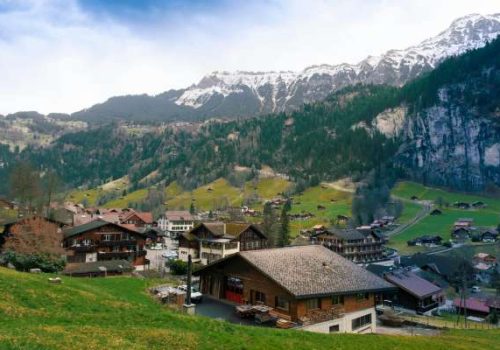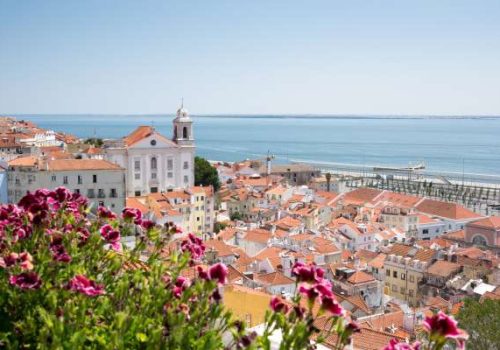Living and Working in Denmark
Information & guidance about seasonal jobs in Denmark
Seasonal jobs in Denmark
We don’t have any jobs matching this search. Below you’ll find a selection of our most popular vacancies!
- Hotel jobs, Tourism
- Cyprus, Greece, Spain
- Adventure jobs, Hotel jobs, Tourism
- Bulgaria, Croatia, Egypt, Greece, Italy, Spain, Turkey
Reasons to Relocate to Denmark
There are many reasons why Denmark is a fantastic place to emigrate to, including its proximity to Germany and high quality of life. However, these factors alone cannot fully explain why this Nordic country is such a popular destination for German expatriates and workers. Perhaps it’s because everything in Denmark is “hyggelig”?
Reasons for Emigrating to Denmark
Although Denmark shares many similarities with Germany, it is not entirely the same. The Danes have developed their own culture, and the Nordic country has much to offer in terms of art, architecture, and nature. The breathtaking beauty of the landscape can be best admired during a cozy bike ride along the long sandy beaches and lakes.
You’ll experience the true Danish feeling when sitting in one of the candlelit cafes, where the typical local hygge atmosphere sets in. This is characterized by coziness and contentment. It’s no wonder that Danes are considered one of the happiest nations in the world.
This progressive country is particularly known for its sustainability and balanced work-life approach. Equality is highly valued, and the Danes have a robust social safety net. The hygge feeling is also present in the workplace, where flat hierarchies prevail, and people work together instead of against each other.
Moreover, in Denmark, you can earn a very good salary; however, the cost of living and income tax rate are slightly higher than in Germany. But when working in Denmark, health insurance contributions are included.
Key Points to Consider:
- Denmark offers a unique culture and stunning natural beauty.
- The concept of “hygge” is central to Danish life, emphasizing coziness and contentment.
- The country promotes sustainability and maintains a healthy work-life balance.
- Equality and a strong social safety net are important in Danish society.
- Salaries are competitive, though living costs and taxes may be higher.
- Health insurance contributions are covered while working in Denmark.
Working in Denmark
Job Market in Denmark
Denmark has relatively few labor regulations, making its job market highly flexible and socially oriented to help families participate more actively in the workforce. The minimum wage in most companies ranges between 12 and 14 euros per hour. Skilled workers are particularly welcome and have diverse career opportunities.
The demand for professionals from Germany in Denmark has increased significantly in recent years. The number of cross-border commuters has exceeded 18,000, and the trend is on the rise. Many positions in software development, programming, as well as professions in the fishing industry, healthcare, technology, and education are in high demand.
Collective bargaining organizations and collective agreements have a significant impact on the Danish labor market and working conditions, unlike laws. As a result, a large proportion of Danish employees are union members. The union membership rate is 67%, making it one of the highest in the world. Employees are often required to join one of the three largest trade union federations: LO, FTF, and Akademikere.
Working Conditions in Denmark
Denmark has 11 national holidays or public holidays. Additionally, many companies have introduced a 4-day workweek. Consequently, an average workweek often amounts to only 33 hours! Moreover, you can expect a minimum of 6 weeks of vacation per year.
Networking is also crucial in Denmark, and numerous events are organized for this purpose. Websites like Jobindex.dk and WorkinDenmark.dk are very useful for finding job opportunities.
The company hierarchy is often implicit, as are the decision-making processes, which are not always apparent. Addressing each other informally is also common in Denmark. Those in charge may not always show their authority overtly. Therefore, it is essential to inquire to identify the manager and decision-makers.
Collaborative projects are frequently undertaken, and everyone is encouraged to contribute their thoughts and ideas. While employees may work together on tasks, each individual is responsible for their own assignments. Timely completion of these tasks is crucial, regardless of the time taken to complete them.
If all of this appeals to you, there is nothing standing in your way to move to Denmark!
Working in Denmark: Salary
When considering a job abroad, the salary naturally plays an important role. Working in Denmark means being among the highest-paid employees in Europe. The wage level is exceptionally high, with the average gross hourly wage being the highest in the European Union last year. The average gross monthly earnings amount to around €5,000. In comparison, the average earnings in Germany, at €3,715, are significantly lower.
Danish Bank Account
Opening a Danish bank account can be advantageous if you plan to stay in Denmark for an extended period. As the country has its own currency, the Danish krone, using a Danish account instead of a foreign one can save you foreign currency fees. However, it is essential to compare the benefits of your German account with those of a Danish one.
Account management fees in Denmark are generally higher than in Germany, such as for credit cards. It’s also worth comparing Danish banks in general. The “Dankort,” similar to the German Girocard, is frequently used for cashless payments.
It is not difficult to open a Danish bank account if you work or study in Denmark, have a residence, or live here for other reasons. Normally, Dankort and credit cards are combined in one physical card.
Working in Denmark: Taxes and Retirement Provision
The Danish tax system ranks among the highest worldwide, depending on the calculation basis.
In addition to the 25% value-added tax and the highest income tax rate of 59%, there is a tax-free allowance. The high Danish tax initially deters many, but considering that healthcare and other social benefits are funded through taxes, the money is not truly “lost.”
Denmark’s state social security system is highly developed. Many benefits are financed not through individual social security systems, as in Germany, but rather from tax revenues, such as the state health insurance.
Being a member of an unemployment fund can be advantageous when immigrating to Denmark. Under the unemployment insurance, you can receive financial support in case of unemployment, without considering your assets, if you are a member of an unemployment fund.
Non-members of unemployment funds receive state social assistance, subject to the same rules as German social welfare. Additionally, various private insurances can be useful for social security.
Denmark’s comprehensive state pension system, known as “Folkepension,” is funded through taxes and not through individual pension plans. In the future, retirement at age 67 will be the norm. “Folkepension” imposes both obligations and entitlements on employees working in Denmark. Furthermore, additional pension plans through employers are also common.
Working in Denmark without Danish Language Skills
The Danish language belongs to the Germanic language branch and shares similarities with German. Danes speak English very well, but it is still advisable to learn Danish if you plan to immigrate to Denmark.
While it may not be strictly necessary when working in an international company, knowing Danish opens up more opportunities for career advancement within the company or switching to another. It is also beneficial on a personal level to have at least some proficiency in Danish, especially for everyday tasks like shopping or integrating into society. Mastering the Danish language can be advantageous, even though it may not be the easiest language to learn.
Tourism and Seasonal Jobs
Danes often vacation within their own country, which is also a popular destination for foreigners. However, this means there are not as many employment opportunities as in other countries. Typically, they prefer individual vacations, such as staying in holiday homes.
In Denmark, you can find seasonal work, although it may not offer as many job opportunities as in other countries. Seasonal jobs are available in various sectors, such as the fish processing industry. Work & Travel options are also available. Students can also find work in the country to support themselves during their studies.
Living in Denmark
Accommodation in Denmark
When deciding to work abroad, it can be helpful to rent an Airbnb for the initial period. This allows you enough time to explore different neighborhoods in a city and figure out where you would like to settle permanently. Rental prices in Denmark are slightly higher than in Germany. For a one-bedroom apartment in the city center, you can expect to pay around €850, while just outside the city, it’s approximately €600.
In most cases, you’ll also need to budget for a deposit equal to three months’ rent and sometimes even pay the rent for the following six months in advance. So, it’s a good idea to have some financial buffer prepared!
The majority of Danes live in their own homes, making it challenging for foreigners to find accommodation, especially rental apartments. Available apartments are rarely advertised through agents or newspapers. You might just come across a sign saying “til leje” (for rent). It’s best to start searching for a vacation home or apartment in advance to find a suitable rental property.
Check out the following websites, and with some luck, you might find your new home in Denmark:
Some lovely neighborhoods in Copenhagen are Frederiksberg, Vesterbro, Nørrebro, and Østerbro.
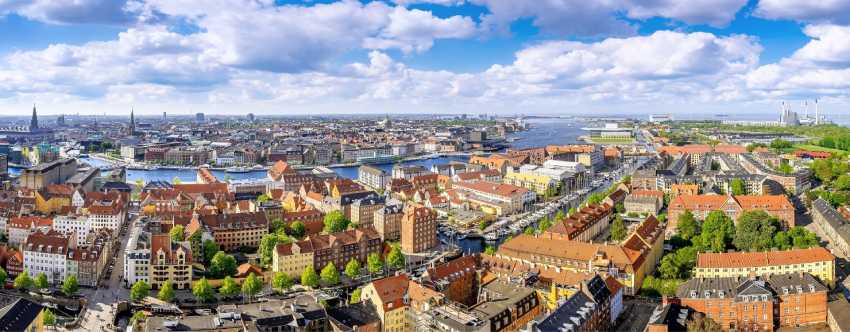
Transport in Denmark
Traveling with public transportation in Denmark is relatively günstig (affordable) and straightforward. In the Copenhagen metro, an electronic ticketing system called Rejsekort is used, but unfortunately, it’s only available for residents of Copenhagen. If you prefer not to deal with zones and fares, you can purchase a Stadtpass (city pass).
Copenhagen is also best explored by Fahrrad (bicycle) – it’s the most beautiful way! Whether you’re in Denmark for a limited time or longer, getting a bike is a must.
The train connections by DSB are excellent as well. Trains regularly depart from Copenhagen to other destinations. For example, the train ride from Copenhagen to Aarhus takes approximately 3 hours, to Aalborg 4 hours, and to Odense 1.5 hours. You can conveniently buy tickets online on the DSB website.
From Berlin, Denmark can be reached in just under an hour, for example, with Norwegian. An average round-trip ticket costs around €120.
Every day, there are multiple flights from Copenhagen to other cities within the country. SAS flies directly to Aarhus, Aalborg, and Billund. Norwegian flies directly to Aalborg, and KLM offers flights to Aalborg, Billund, and Copenhagen.
Eating in Denmark
The Danish cuisine is heavily influenced by its proximity to the sea, with many fish dishes taking the center stage. Meat is also widely enjoyed, and traditional dishes tend to be hearty. Besides regional products, potatoes and bread are particularly popular. Dairy products such as cream, cheese, or yogurt are frequently used in Danish cooking. The Danish cuisine places great emphasis on sweet pastries and desserts.
If you happen to love cheese, Denmark has some delicious options. Soft cheeses like Havarti with hazelnut flavor, the renowned “Danish Blue,” the incredibly pungent “Gamle Ole,” the Danish Trappist cheese “Esrom,” and the Danish caraway-smoked cheese “Rygeost” are all favorites.
The restaurant scene in Copenhagen is one of the most innovative in the world and stands out in the international food scene. If you enjoy dining out, you’ll be in culinary heaven in the capital!
The cost of groceries in our Nordic neighbor is slightly higher than in Germany and Austria, but cheaper than in Switzerland. For instance, a cappuccino on average costs €3, a bottle of wine €8, and a standard meal €15. But don’t be discouraged, as a delicious self-brewed Danish beer in the supermarket only costs €1.60!
However, alcohol and cigarettes are much more expensive. A money-saving tip for living in Denmark is to buy fruits and vegetables seasonally at the market. Eating out is usually quite pricey, so cooking your own meals can save you a lot of money.
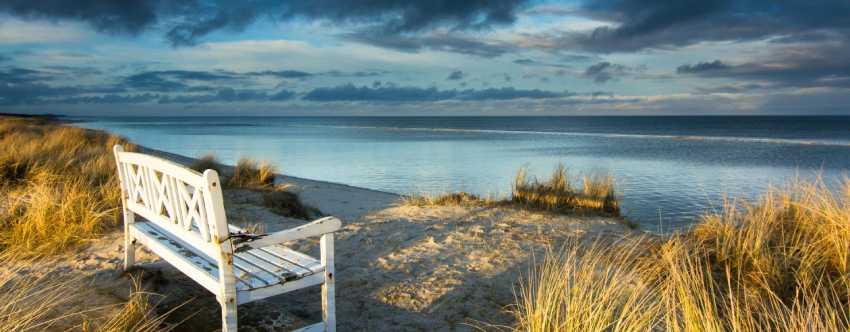
Nature and Landscape in Denmark
Denmark is predominantly a Flachland (lowland) country without mountains. The capital is located on the largest island, Zealand, which is separated from Sweden by a narrow strait called the Sont. The Sont Bridge and Tunnel connect the Danish capital Copenhagen with the Swedish city of Malmö.
Beautiful Nationalparks (national parks) are scattered all over Denmark. The best way to fully enjoy the nature is by going on a bike or hiking tour. During these adventures, you can even observe birds or seals along the coast. The parks are pristine natural playgrounds where you can have picnics, ride bikes, go horseback riding, camp, and spend time with friends around a campfire. Each park has a visitor center where you can get tips for exploring the area.
Moreover, in this relatively small country, you are never more than 50 km away from the coast. Denmark boasts some of the most stunning beaches in Europe, featuring white sand, large dunes, and vast, untouched nature. Denmark offers all this and more for you to enjoy.
Places to Visit in Denmark: The Most Beautiful Locations
Kopenhagen (Copenhagen)
Copenhagen is probably the liveliest city in Scandinavia, and not just because of the many fantastic festivals held here. The nightlife in Copenhagen has a lot to offer as well. Despite being the capital of the country, you will find charming old buildings here, nestled alongside numerous green parks, gardens, and fountains.
The atmosphere in Copenhagen is very relaxed, even a bit “village-like.” One major attraction in Copenhagen is the statue of the Little Mermaid, known from the fairy tale by Danish author Hans Christian Andersen. A visit to the Tivoli amusement park is also a must. It is centrally located in Copenhagen, near the main train station and the city hall. Tivoli is Denmark’s most popular amusement park.
Die Insel Møn (The Island of Møn)
Møn is a 218 km² island in the Baltic Sea, situated between Zealand and Falster. The island can be reached by land via two different bridges or by ferry. The island is famous for having the highest cliffs in the country: Møns Klint.
Nature enthusiasts can marvel at the 128-meter-high cliffs in Denmark. The ascent and descent take a total of 30 minutes and involve 500 steps. From there, you have a magnificent view of the sea. On clear days, you can even see Sweden. Alternatively, you can admire the spectacular chalk cliffs during a beach walk and return through a dense beech forest.
Legoland
Who doesn’t know Legoland? The theme park near Billund, entirely based on the beloved LEGO bricks. This amusement park is beloved by all. The Miniland is especially charming, resembling Madurodam but entirely made of LEGO bricks.
Der Strand von Skagen (The Beach of Skagen)
Many tourists come to the beaches of Skagen, as there is no less than 8000 km of coastline! The Skagen Museum is also worth a visit. In Skagen, you can enjoy the beautiful view and relax in the silence and the sun.
Schlösser (Castles)
Denmark boasts many castles, each more impressive than the other. Renaissance enthusiasts should not miss Egeskov Castle. The castle is located on the Danish island of Funen. As it is surrounded by a moat, you can only enter the interior via a drawbridge. The castle, built in 1554, also features a vast park, known especially for its well-kept English gardens and freely roaming peacocks.
Healthcare in Denmark
Working in Denmark means having access to one of the best healthcare systems in the world. Healthcare is almost entirely free of charge, thanks to its funding primarily through taxes. As a resident in the country, you automatically qualify for public health services, but you need to apply for a CPR number and a health card first.
While almost all healthcare services are free, it’s essential to know that not all areas of the healthcare system are entirely cost-free. For instance, dental care for adults in Denmark is not free. However, the state covers about 40% (or 65% up to the age of 25 years) of dental care costs.
Working in Denmark: Visa and Travel Insurance
As an EU citizen, you do not need a visa to work in Denmark since the country is also part of the EU. You are required to register with the civil registration system (Folkeregister) after three months of staying there. To do this, you need to visit a local government agency.
Upon registration, you will receive a personal identification number (Bürgerservicenummer) that allows you to apply for a tax card, a health card, and a bank card, among others.
If you have lived in Denmark for more than five years, you can easily apply for a permanent residence permit. Further information on emigration can be found on familieretshuset.dk.
Additionally, you can always contact the Embassy in Copenhagen if your passport has expired or been lost to apply for a new one. This means you don’t have to travel back to Germany to obtain a new passport. The German Embassy in Copenhagen also provides assistance with other matters affecting Germans living abroad.
Cost of Living in Denmark
Living abroad can be expensive, and once you’re in Denmark, you’ll quickly notice that the cost of living is generally very high. As in many other countries, expenses in small towns and rural areas are much lower than in big cities.
For example, Copenhagen is one of the most expensive cities in the world. The cost of living naturally varies depending on your lifestyle, but you should budget for a monthly amount between €600 and €1000. In Copenhagen, the expenses are higher, and you might need between €1280 and €1800 per month.
But don’t worry: Despite the high cost of living, you can still afford a good life because salaries are accordingly high.
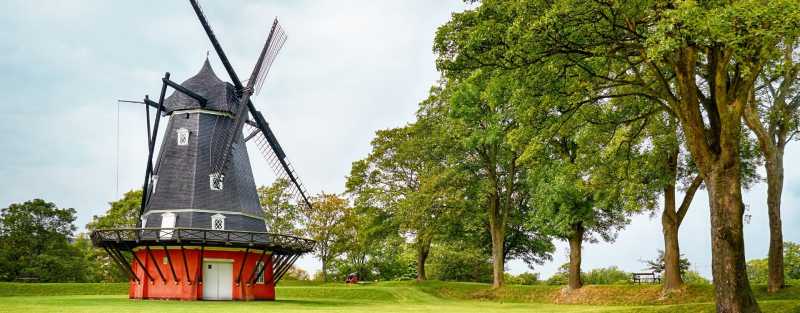
Culture in Denmark
If you decide to emigrate to Denmark, it is advantageous to know something about the Danish culture. Danish culture has evolved over centuries but shares certain similarities with that of Germany, Austria, and Switzerland. Denmark’s culture encompasses not only extraordinary landmarks and stunning landscapes but also the special way of life of the Danes. It is characterized by cheerfulness, coziness, and the preservation of Danish traditions.
If one had to describe the Danes’ mentality in just one word, it would be “hyggelig.” However, this term is as multifaceted as Danish culture itself. Hygge is a life philosophy that embodies enjoying the present moment, coziness, comfort, and well-being. The many events such as markets and joyful festivals are typical of the Danish hygge culture. Moreover, the Danes have a well-developed sense of humor and can easily laugh at themselves. Thanks to the high standard of living that the Danes enjoy, you will quickly feel at home in their country.



